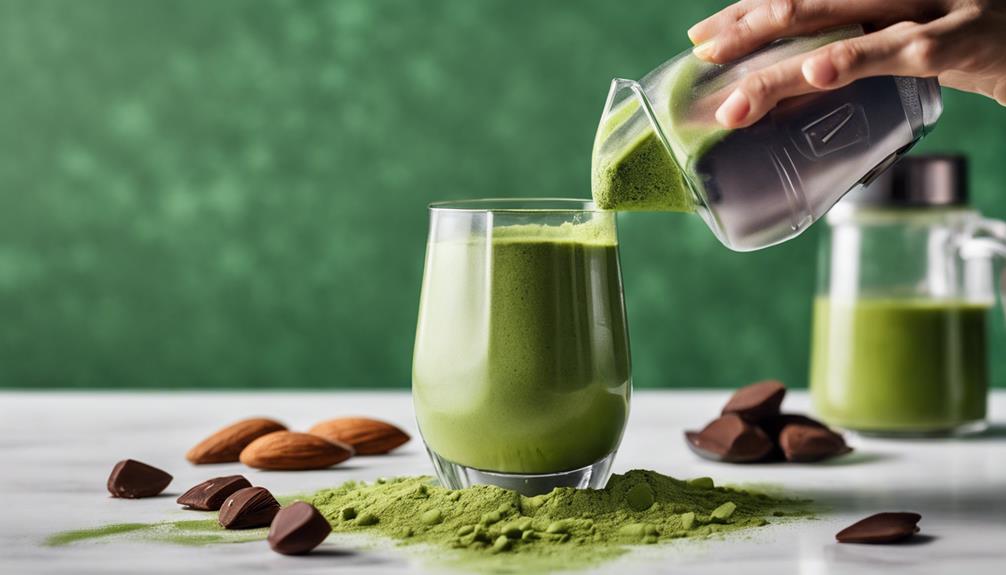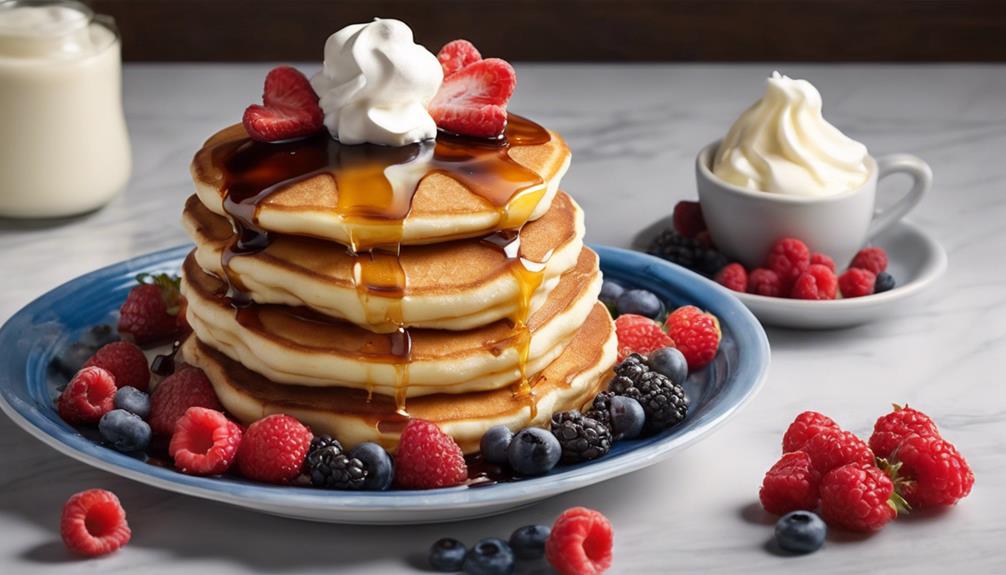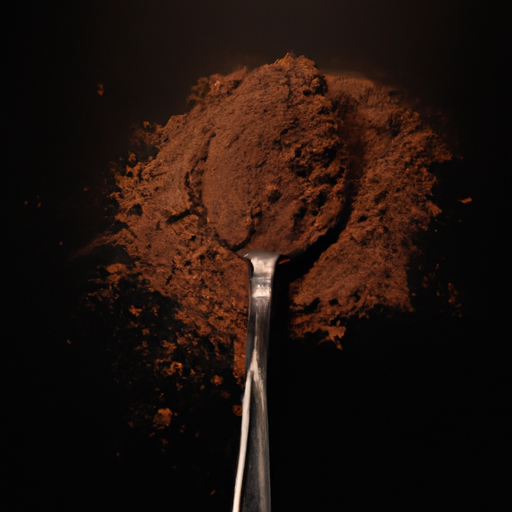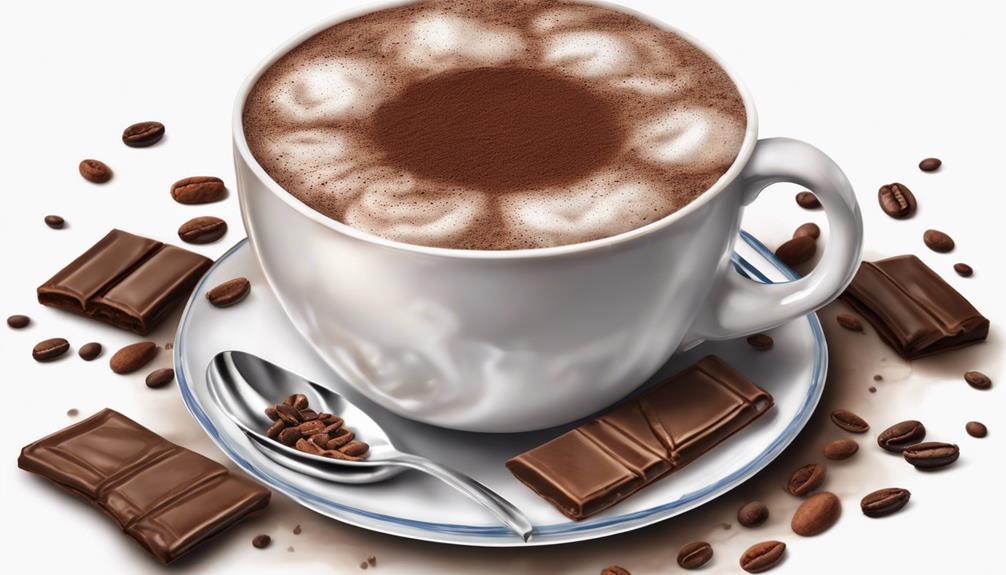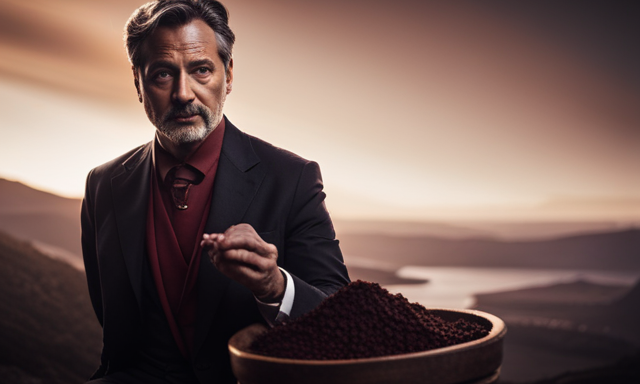I love using cacao powder for a natural caffeine boost. Cacao is rich in antioxidants and theobromine, which can help improve mental alertness without causing jitters. To include it in my diet, I mix cacao powder into smoothies, sprinkle it on oatmeal, or incorporate it into baked goods. In the mornings, adding cacao to beverages gives me a healthy start without the subsequent crash. If you’re interested in discovering more ways to enjoy cacao for sustained energy and focus, there are numerous options to try out!
Key Takeaways
- Blend cacao powder into morning smoothies for sustained energy.
- Sprinkle cacao powder over oatmeal to kickstart your day.
- Incorporate cacao into baked goods for a natural caffeine boost.
- Enhance meals with cacao powder for a natural energy lift.
- Enjoy hot cacao drinks for a warm, caffeine-rich indulgence.
Benefits of Using Cacao Powder
Incorporating cacao powder into my daily routine has greatly boosted my energy levels without the usual jitteriness associated with caffeine. This essential source of antioxidants not only provides a gentle energy lift but also supports my overall well-being. The rich supply of antioxidants in cacao powder helps combat free radicals in my body, reducing oxidative stress and promoting a healthier me. The theobromine found in cacao powder acts as a mild stimulant, enhancing my mental alertness and focus without overwhelming my central nervous system.
Furthermore, the magnesium content in cacao powder plays a crucial role in energy production, aiding in the prevention of fatigue. By regularly including cacao powder in my diet, I've noticed a significant improvement in my energy levels throughout the day. This alternative to traditional caffeine sources has become an essential part of my routine, providing sustained energy without the crash.
Understanding Caffeine in Cacao
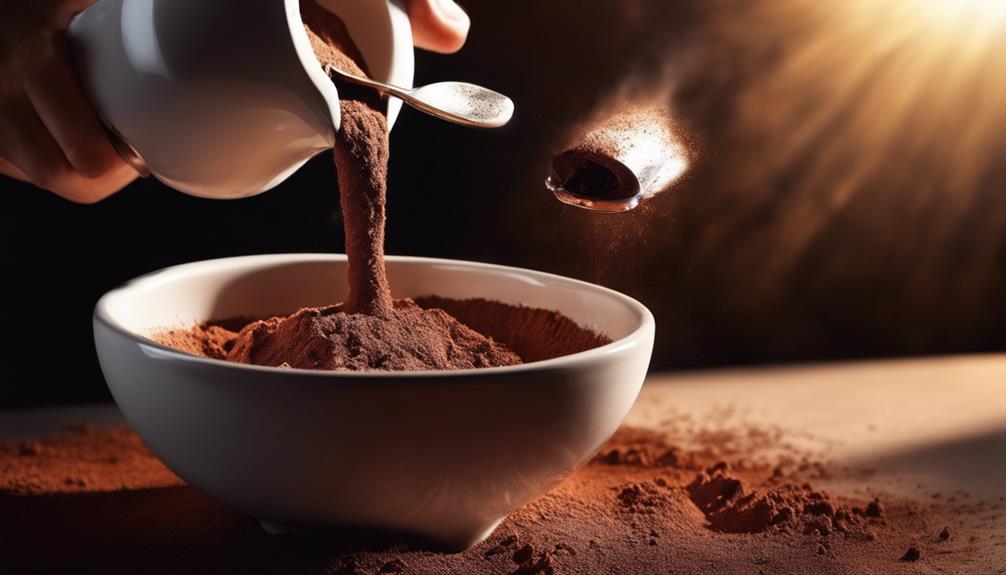
Cacao's theobromine content offers a milder alternative to traditional caffeine sources, providing sustained energy without the typical side effects. While raw cacao does contain some caffeine, it is minimal compared to coffee. Here's a table to help you understand the caffeine content better:
| Cacao Product | Caffeine Content per 100g |
|---|---|
| Raw Cacao Powder | 12 mg |
| Dark Chocolate | 43 mg |
| Coffee | 40 mg |
Raw cacao's caffeine level is notably lower than both coffee and dark chocolate, making it a great choice for those looking for a gentle energy boost. The theobromine in cacao stimulates the central nervous system, promoting alertness and concentration without the jittery feeling often experienced with high caffeine intake. By incorporating raw cacao into your daily routine, you can enjoy the benefits of a natural energy lift without the drawbacks of excessive caffeine consumption.
Incorporating Cacao Into Your Diet
To enhance your daily meals with a natural energy boost, consider adding cacao powder to your favorite recipes. Here are three ways to make cacao a delicious and energizing part of your diet:
- Smoothie Power:
Blend a tablespoon of cacao powder into your morning smoothie for a rich chocolate flavor and a caffeine kick to start your day off right.
- Oatmeal Upgrade:
Sprinkle cacao powder over your bowl of oatmeal for a decadent twist. The cacao won't only add a chocolatey taste but also provide sustained energy throughout your morning.
- Baked Goods Delight:
Incorporate cacao powder into your favorite baked goods like brownies or cookies. Not only will you enjoy the indulgent taste, but you'll also benefit from the natural caffeine boost cacao provides.
Cacao Powder in Morning Beverages
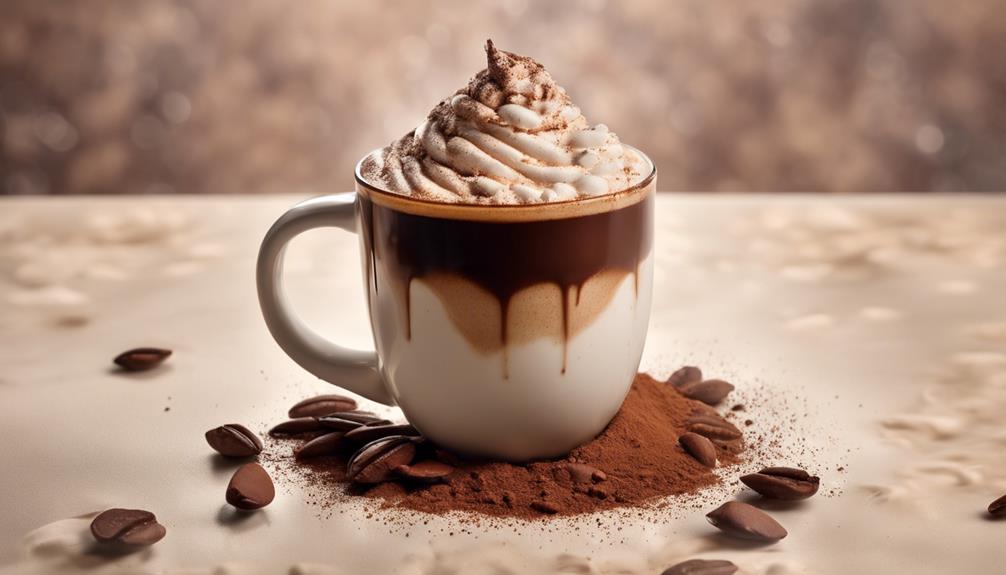
For an energizing morning kickstart, consider blending cacao powder into your favorite beverages. Cacao powder not only adds a delicious chocolatey flavor but also provides a natural caffeine boost without the jitters. This magical powder is loaded with antioxidants, such as flavonoids, which help protect your cells from damage and promote overall health. The theobromine in cacao acts as a natural stimulant, enhancing alertness and focus, making it an ideal addition to your morning routine.
Let's take a closer look at some creative ways to incorporate cacao powder into your morning beverages:
| Morning Beverage Ideas | Description | Benefits |
|---|---|---|
| Cacao Coffee | Mix cacao powder | Natural caffeine boost |
| Cacao Smoothie | Blend with fruits | Antioxidant-rich energy boost |
| Cacao Oatmeal | Sprinkle over oats | Enhanced chocolatey flavor |
Including cacao powder in your morning beverages not only adds a touch of indulgence but also provides a healthy dose of antioxidants to start your day right.
Cacao Smoothie Recipes for Energy
Blending cacao powder into smoothies is a delicious and invigorating way to kickstart your day with a natural caffeine boost. Here are three delectable cacao smoothie recipes to help you power through your day:
- Banana Cacao Bliss: Blend a ripe banana, a tablespoon of cacao powder, a cup of almond milk, and a handful of spinach for a creamy and nutritious morning treat.
- Berry Cacao Delight: Mix frozen berries, cacao powder, Greek yogurt, and a splash of honey for a revitalizing and antioxidant-packed smoothie that will keep you energized.
- Chocolate Peanut Butter Power: Combine cacao powder, peanut butter, a frozen banana, and oat milk for a protein-rich smoothie that tastes like a decadent treat but fuels you with lasting energy.
These cacao smoothie recipes not only taste indulgent but also provide a natural energy boost to help you seize the day. Try one for breakfast or as a post-workout refuel for a satisfying and nourishing experience.
Cacao-Infused Oatmeal Ideas
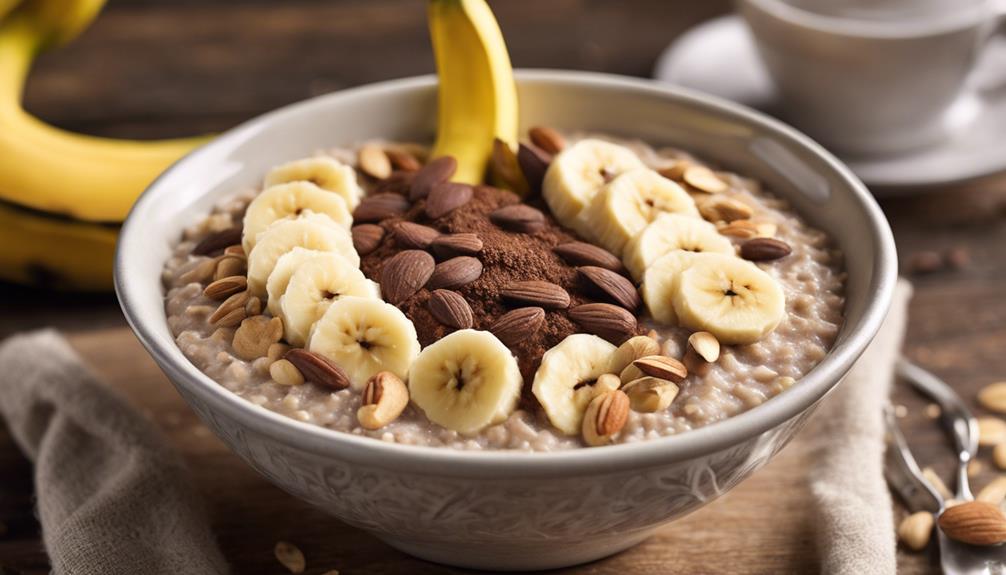
I'll acquaint you with delightful oatmeal combinations that will tantalize your taste buds.
We'll delve into the health advantages of cacao and how it can enhance your mornings.
Let's immerse ourselves in a speedy cacao-infused breakfast recipe that will jumpstart your day with a burst of energy!
Flavorful Oatmeal Combinations
Reveal a burst of chocolatey goodness with these imaginative cacao-infused oatmeal combinations.
- Chocolate-Banana Bliss: Mix cacao powder with creamy oatmeal, top it with sliced bananas, and a sprinkle of cinnamon for a delightful morning treat.
- Coconut-Cacao Crunch: Stir cacao powder into your oatmeal, add shredded coconut, and a handful of crunchy almonds for a tropical twist that will leave you satisfied.
- Berry-Chocolate Delight: Combine cacao powder with your oats, then add a mix of fresh berries like strawberries and blueberries for a burst of antioxidants and sweet flavors that will make your taste buds dance.
These cacao-infused oatmeal ideas won't only tantalize your senses but also provide a nutritious and energizing start to your day.
Health Benefits of Cacao
Exploring the health benefits of cacao in your morning oatmeal can provide a flavorful and energizing start to your day. Cacao powder is a powerhouse of antioxidants, such as flavonoids, which support heart health and reduce inflammation. Additionally, the theobromine in cacao offers a natural energy boost, minus the jitters often associated with caffeine. When mixed with oats, cacao-infused oatmeal becomes a nutritious breakfast choice, delivering a rich chocolate taste. This combination not only enhances the antioxidant capacity of your meal but also provides essential nutrients like magnesium and iron. By incorporating cacao into your oatmeal, you can satisfy sweet cravings while improving mood and focus.
| Health Benefits of Cacao | |
|---|---|
| Antioxidant Capacity | Heart Health |
| Natural Energy Boost | Reduced Inflammation |
| Essential Nutrients | Improved Mood |
| Chocolate Flavor | Focus Enhancement |
Quick Cacao Breakfast Recipe
Mixing cacao powder with oats creates a flavorful and nutritious breakfast option that energizes your morning routine. Here are three cacao-infused oatmeal ideas to get you started:
- Chocolate Banana Oatmeal: Combine oats, cacao powder, sliced bananas, and a dash of honey for a sweet and indulgent morning treat.
- Berry Bliss Oatmeal: Mix cacao powder with oats, top with a handful of mixed berries, and enjoy a burst of antioxidants to kickstart your day.
- Almond Joy Oatmeal: Blend cacao powder and oats, sprinkle with chopped almonds and coconut flakes for a rich and satisfying breakfast loaded with antioxidants.
These recipes not only taste delicious but also provide a healthy dose of antioxidants from the cacao powder to support your well-being.
Cacao Powder in Baked Goods
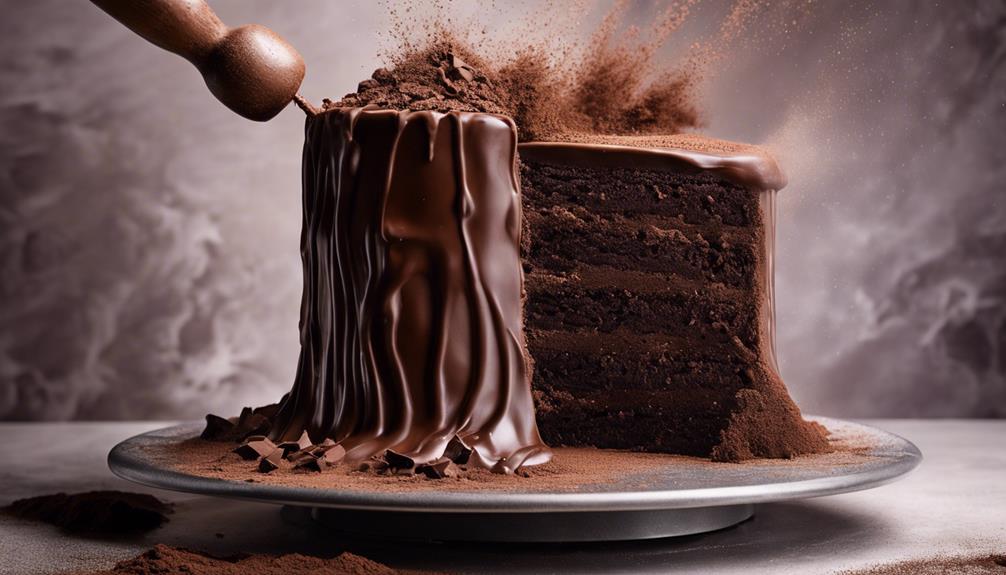
When baking with cacao powder, a little goes a long way in infusing your treats with a rich chocolate essence. It's amazing how a small amount of cacao can transform your baked goods into decadent chocolate delights. Check out the table below for some inspiration on how to incorporate cacao powder into your favorite recipes:
| Baked Good | Cacao Powder Amount | Benefits |
|---|---|---|
| Brownies | 2-3 tablespoons | Rich, fudgy texture and antioxidant boost |
| Cookies | 1-2 tablespoons | Intense chocolate flavor and mood-enhancing properties |
| Cakes | 3-4 tablespoons | Moistness and theobromine for mental focus |
Experimenting with cacao in your baking not only pleases your taste buds but also nourishes your body with its natural goodness. So, next time you're in the kitchen, don't forget to reach for that cacao powder and make your treats extra special!
Cacao Energy Balls Recipe
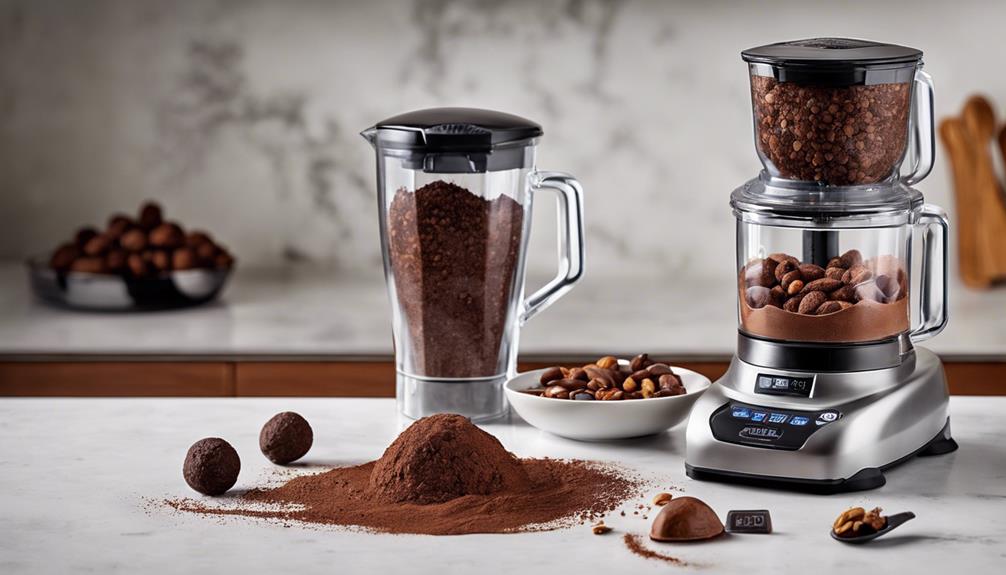
When making cacao energy balls, gather ingredients like cacao powder, nuts, dates, and optional superfoods.
Begin by blending these components in a food processor until a sticky dough forms.
Roll the mixture into small balls, then refrigerate for at least 30 minutes before enjoying a tasty and energizing snack.
Energy Ball Ingredients
To create flavorful and energizing cacao energy balls, start by gathering the necessary ingredients and a mixing bowl. When preparing these delightful treats, I recommend using premium ingredients to guarantee a delicious outcome. Here are three key items you'll need to get started:
- Cacao Powder: This rich and flavorful ingredient not only provides a natural source of caffeine but also boasts powerful antioxidants to support your well-being.
- Nuts and Seeds: Adding a mix of nuts and seeds not only enhances the texture of your energy balls but also contributes healthy fats and essential nutrients to keep you fueled.
- Dried Fruits: Sweet and chewy dried fruits bring a natural sweetness to your energy balls while offering additional vitamins and minerals for a nutritious boost.
Preparation Steps
I recommend starting by combining the dates, nuts, seeds, and cacao powder in a food processor until a sticky mixture forms. Then, roll the mixture into bite-sized balls, and chill them in the fridge for about 30 minutes to set. Here's a simple table to guide you through the preparation steps:
| Preparation Steps |
|---|
| 1. Combine dates, nuts, seeds, and cacao powder in a food processor. |
| 2. Blend until a sticky mixture forms. |
| 3. Roll the mixture into bite-sized balls. |
| 4. Chill in the fridge for 30 minutes. |
Making cacao energy balls is a fun and easy way to enjoy a healthy snack packed with the goodness of cacao powder and natural energy-boosting ingredients.
Cacao Hot Drink Options
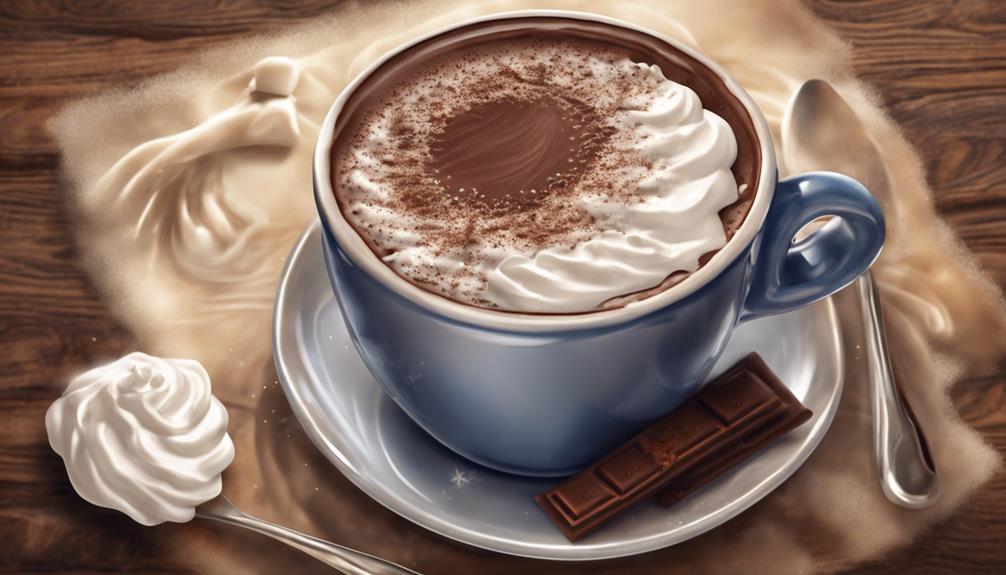
For those looking for a snug beverage with a natural caffeine kick, exploring the variety of cacao hot drink options offers a delightful journey into warm, flavorful indulgence.
Here are three alluring ways to enjoy the goodness of cacao in a comforting hot drink:
- Classic Hot Cacao: Blend cacao powder with warm milk for a traditional and luxurious hot chocolate experience. The velvety texture combined with the intense cacao flavor creates a calming drink perfect for chilly days.
- Spiced Cacao Latte: Elevate your hot cacao by adding a dash of cinnamon or nutmeg. These spices not only enhance the flavor but also provide additional health benefits. The warm and cozy scent of spices adds an extra layer of comfort to your drink.
- Minty Cacao Delight: Infuse your hot cacao with a touch of fresh mint leaves for a rejuvenating twist. The crispness of mint paired with the deep cacao flavor creates a revitalizing and invigorating beverage that's ideal for a pick-me-up during the day.
Cacao Powder for Pre-Workout Boost

Exploring the benefits of incorporating cacao powder into your pre-workout routine can enhance your energy levels and overall workout performance. Cacao powder contains theobromine, a vital stimulant that can boost focus and alertness, preparing your mind and body for exercise.
Additionally, the antioxidants present in cacao powder play an essential role in reducing oxidative stress during physical activity, aiding in quicker recovery and improved endurance. For an ideal pre-workout boost, consider mixing cacao powder with a carbohydrate source like bananas or oats to provide sustained energy throughout your workout session.
Conveniently, you can add cacao powder to various pre-workout snacks such as smoothies, oatmeal, or energy balls. By incorporating cacao powder into your pre-workout routine, you not only support your energy levels but also benefit from the antioxidant properties that can enhance your overall workout performance.
Frequently Asked Questions
How Much Caffeine Is in a Teaspoon of Raw Cacao Powder?
In a teaspoon of raw cacao powder, there's about 12 mg of caffeine. It's less than coffee but can still give a gentle energy boost. Plus, cacao has theobromine for a longer-lasting effect. Incorporating it into my diet sounds like a good idea.
Can You Use Cacao Powder Like Coffee?
Like a warm hug in a mug, using cacao powder like coffee offers a flavorful and gentle energy boost. I enjoy its rich taste and the way it supports my well-being without the caffeine jitters.
What Is the Best Way to Consume Cacao Powder?
The best way to consume cacao powder is by adding it to various foods and drinks. Mix it with coffee, smoothies, or oatmeal for a natural caffeine boost. Sprinkle on yogurt, fruit bowls, or incorporate into baked goods for a rich flavor and energy kick.
How Do You Add Cacao Powder to Coffee?
To add cacao powder to coffee, start by stirring it into your cup for a delightful natural caffeine kick and a hint of chocolate. Explore different amounts for your desired flavor. It's a simple way to elevate your morning brew.
Can I Use Cacao Powder as a Substitute for Coffee for a Caffeine Boost?
Yes, you can use cacao powder as a substitute for coffee for a caffeine boost. Cacao powder contains theobromine, a stimulant similar to caffeine. However, the effect may not be as strong. For a comprehensive caffeine cacao guide, consult a nutritionist or detailed online resource.
Conclusion
Just like a seed needs water and sunlight to grow into a robust oak tree, you can nourish your body with cacao powder for a natural caffeine boost.
By incorporating this superfood into your daily routine, you can harness its energy-boosting properties and fuel your day with vitality.
Remember, small changes can lead to significant outcomes, so start sprinkling some cacao powder into your favorite recipes and watch your energy soar!

